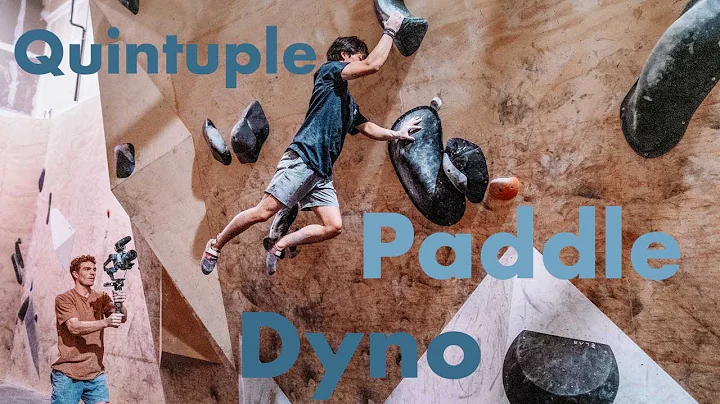Warren Richard Ross
age ~64
from Montgomery, TX
- Also known as:
-
- Warren R Ross
Warren Ross Phones & Addresses
- Montgomery, TX
- Houston, TX
- 14314 Lantana Branch Ln, Humble, TX 77396 • 8322472671
- Pittsburgh, PA
- Baltimore, MD
- 14314 Lantana Branch Ln, Humble, TX 77396
Work
-
Company:National oceanic and atmospheric administration
-
Address:1325 E West Hwy Bldg Ssmc, Silver Spring, MD 20910
-
Phones:3017131731
-
Position:Powered support systems mechanic
-
Industries:Air and Water Resource and Solid Waste Management
Education
-
Degree:Bachelor's degree or higher
Resumes

Vice President
view sourceLocation:
Houston, TX
Industry:
Banking
Work:
Wells Fargo
Vice President
Vice President
Skills:
Commercial Banking
Commercial Lending
Banking
Credit Analysis
Credit
Loans
Commercial Lending
Banking
Credit Analysis
Credit
Loans

Warren Ross
view source
Warren Ross
view source
Warren Ross
view source
Warren Ross
view source
Warren Ross
view source
Warren Ross
view source
Warren Ross
view sourceName / Title
Company / Classification
Phones & Addresses
Service Manager
Dave Ross Equipment Ltd
Auto Dealers - New Cars
Auto Dealers - New Cars
Box 100, Spirit River, AB T0H 3G0
7808643731
7808643731
Powered Support Systems Mechanic
National Oceanic and Atmospheric Administration
Air and Water Resource and Solid Waste Manage...
Air and Water Resource and Solid Waste Manage...
1325 E West Hwy Bldg Ssmc, Silver Spring, MD 20910
Physician
Crossroads Medical Associates, Llc
Specialty Outpatient Facilities
Specialty Outpatient Facilities
4801 Dorsey Hall Dr Ste 2, Ellicott, MD 21042
Service Manager
Dave Ross Equipment Ltd
Auto Dealers - New Cars
Auto Dealers - New Cars
7808643731
Us Patents
-
Method For Multiple Suppression Based On Phase Arrays
view source -
US Patent:6606278, Aug 12, 2003
-
Filed:Nov 16, 2001
-
Appl. No.:09/992585
-
Inventors:Paul J. Lee - Houston TX
Warren S. Ross - Houston TX
John V. Young - Humble TX
Michael M. Zhang - Sugar Land TX
Doug Angevine - Spring TX
Steve E. Heiney - Houston TX -
Assignee:ExxonMobil Upstream Research Company - Houston TX
-
International Classification:G01V 138
-
US Classification:367 24, 367 25, 181110, 181112
-
Abstract:An apparatus and method for suppressing multiples in the collection of marine seismic data comprises at least one source positioned in the body of water; at least one receiver positioned in the body of water below the air-water interface and near the sources; a bubble diffuser positioned in the body of water so that the bubbles emitted by the bubble diffuser are positioned between the receivers and the air-water interface, wherein the emitted bubbles provide high acoustic reflection and substantially suppress specular reflection of seismic waves; and a control for activating the bubble diffuser during the collection of seismic data by the sources and receivers.
-
Diverse Bubble Size Generation
view source -
US Patent:8162297, Apr 24, 2012
-
Filed:May 9, 2007
-
Appl. No.:12/303534
-
Inventors:Michael W. Norris - Cypress TX, US
Steven E. Heiney - Houston TX, US
Warren S. Ross - Houston TX, US
Marvin L. Johnson - The Woodlands TX, US -
Assignee:ExxonMobil Upstream Research Co. - Houston TX
-
International Classification:B01F 3/04
-
US Classification:2611221, 261124, 367 15, 367 24
-
Abstract:Method and apparatus for producing a bubble curtain with a diversity of bubble diameters for purposes such as suppressing surface-related multiple reflections in marine seismic surveys. Bubble generating elements are used that combine porous wall material with discrete holes.
-
Method For Electromagnetic Air-Wave Suppression By Active Cancellation And Shielding
view source -
US Patent:8165815, Apr 24, 2012
-
Filed:Oct 27, 2006
-
Appl. No.:12/161785
-
Inventors:Scott C. Hornbostel - Houston TX, US
Warren S. Ross - Houston TX, US
Leonard J. Srnka - Bellaire TX, US -
Assignee:ExxonMobil Upstream Research Co. - Houston TX
-
International Classification:G01V 1/40
-
US Classification:702 9
-
Abstract:Method for reducing air wave and/or magnetotelluric noise in controlled source electromagnetic surveying by either shielding the source () from the air interface, shielding the receivers from downward traveling electromagnetic energy, or by employing a second source () to preferentially cancel the air wave (and MT) part of the signal, or a combination of the preceding.
-
Diverse Bubble Size Generation
view source -
US Patent:8276889, Oct 2, 2012
-
Filed:Mar 15, 2012
-
Appl. No.:13/421234
-
Inventors:Michael W. Norris - Cypress TX, US
Steven E. Heiney - Houston TX, US
Warren S. Ross - Houston TX, US
Marvin L. Johnson - The Woodlands TX, US -
Assignee:ExxonMobil Upstream Research Company - Houston TX
-
International Classification:B01F 3/04
-
US Classification:261120, 2611221, 261124
-
Abstract:Method and apparatus for producing a bubble curtain with a diversity of bubble diameters for purposes such as modifying the characteristics of a seismic source used in marine seismic surveys. Bubble generating elements are used that combine porous wall material with discrete holes () to create a curtain of diverse-sized bubbles ().
-
Method To Adapt A Template Dataset To A Target Dataset By Using Curvelet Representations
view source -
US Patent:8280695, Oct 2, 2012
-
Filed:Aug 28, 2008
-
Appl. No.:12/675083
-
Inventors:Ramesh Neelamani - Houston TX, US
Anatoly Baumstein - Houston TX, US
Warren S. Ross - Houston TX, US -
Assignee:ExxonMobil Upstream Research Company - Houston TX
-
International Classification:H03F 1/26
G01V 1/00
G06G 7/48 -
US Classification:702191, 367 73, 703 10
-
Abstract:Method for adapting a template to a target data set. The template may be used to remove noise from, or interpret noise in, the target data set. The target data set is transformed () using a selected complex-valued, directional, multi-resolution transform (‘CDMT’) satisfying the Hubert transform property at least approximately. An initial template is selected, and it is transformed () using the same CDMT. Then the transformed template is adapted () to the transformed target data by adjusting the template's expansion coefficients within allowed ranges of adjustment so as to better match the expansion coefficients of the target data set. Multiple templates may be simultaneously adapted to better fit the noise or other component of the data that it may be desired to represent by template.
-
Method For Performing Constrained Polarization Filtering
view source -
US Patent:8352192, Jan 8, 2013
-
Filed:Feb 18, 2009
-
Appl. No.:12/865533
-
Inventors:Mamadou S. Diallo - Houston TX, US
Marvin L. Johnson - Chromo CO, US
Warren S. Ross - Houston TX, US
Christine E. Krohn - Houston TX, US -
Assignee:ExxonMobil Upstream Research Comapny - Houston TX
-
International Classification:G01V 1/00
G01V 1/28
G06F 19/00 -
US Classification:702 17, 367 31, 702 18
-
Abstract:An exemplary method for filtering multi-component seismic data is provided. One or more characteristics of the seismic data corresponding to a relative manifestation of surface wave noise on the different components, such as polarization attributes, are identified. A time-frequency boundary in the seismic data is also identified in the time-frequency transform domain, the time-frequency boundary delineating portions of the seismic data estimated to contain surface wave noise (). Finally, filtered seismic data are created () by removing portions of the seismic data that correspond to the identified characteristics of surface waves and that are within the time-frequency boundary ().
-
Surface Wave Mitigation In Spatially Inhomogeneous Media
view source -
US Patent:8451684, May 28, 2013
-
Filed:Jan 26, 2009
-
Appl. No.:12/811461
-
Inventors:Sunwoong Lee - Houston TX, US
Warren S. Ross - Houston TX, US -
Assignee:ExxonMobil Upstream Research Company - Houston TX
-
International Classification:G01V 1/00
-
US Classification:367 38, 702 17
-
Abstract:Embodiments are directed to systems and methods () that enable spatial variability of surface waves to be accounted for in dispersion correction in seismic data processing. This yields superior surface wave noise mitigation, with reduced likelihood of attenuating signal. Embodiments are operative with spatially inhomogeneous media.
-
Characterizing Spatial Variability Of Surface Waves In Seismic Processing
view source -
US Patent:8483009, Jul 9, 2013
-
Filed:Jan 26, 2009
-
Appl. No.:12/811464
-
Inventors:Sunwoong Lee - Houston TX, US
Warren S. Ross - Houston TX, US -
Assignee:ExxonMobil Upstream Research Company - Houston TX
-
International Classification:G01V 1/36
-
US Classification:367 43, 367 38, 702 17
-
Abstract:Embodiments use seismic processing methods that account for the spatial variability of surface wave velocities. Embodiments analyze surface wave properties by rapidly characterizing spatial variability of the surface waves in the seismic survey data (). Filtering criteria are formed using the spatial variability of the surface waves (). The filtering criteria can then be used to remove at least a portion of the surface waves from the seismic data (). The rapid characterization involves estimating a local group velocity of the surface waves by cross-correlation of the analytic signals ().
Medicine Doctors

Warren M. Ross
view sourceSpecialties:
Internal Medicine
Work:
Crossroads Medical Associates
4801 Dorsey Hall Dr STE 201, Ellicott City, MD 21042
4109975191 (phone), 4109977957 (fax)
4801 Dorsey Hall Dr STE 201, Ellicott City, MD 21042
4109975191 (phone), 4109977957 (fax)
Education:
Medical School
University of Buffalo, SUNY School of Medicine and Biomedical Sciences
Graduated: 1971
University of Buffalo, SUNY School of Medicine and Biomedical Sciences
Graduated: 1971
Procedures:
Allergen Immunotherapy
Arthrocentesis
Cardiac Stress Test
Destruction of Benign/Premalignant Skin Lesions
Electrocardiogram (EKG or ECG)
Hearing Evaluation
Inner Ear Tests
Psychological and Neuropsychological Tests
Pulmonary Function Tests
Skin Tags Removal
Vaccine Administration
Wound Care
Arthrocentesis
Cardiac Stress Test
Destruction of Benign/Premalignant Skin Lesions
Electrocardiogram (EKG or ECG)
Hearing Evaluation
Inner Ear Tests
Psychological and Neuropsychological Tests
Pulmonary Function Tests
Skin Tags Removal
Vaccine Administration
Wound Care
Conditions:
Abdominal Hernia
Abnormal Vaginal Bleeding
Acne
Acute Bronchitis
Acute Conjunctivitis
Abnormal Vaginal Bleeding
Acne
Acute Bronchitis
Acute Conjunctivitis
Languages:
English
Description:
Dr. Ross graduated from the University of Buffalo, SUNY School of Medicine and Biomedical Sciences in 1971. He works in Ellicott City, MD and specializes in Internal Medicine.

Warren Edward Ross
view sourceSpecialties:
Internal Medicine
Medical Oncology
Medical Oncology
Education:
University of Florida (1973) Internal Medicine
Googleplus

Warren Ross

Warren Ross

Warren Ross

Warren Ross

Warren Ross

Warren Ross

Warren Ross

Warren Ross
Work:
US AIR FORCE,US POSTAT SERVICE
Education:
NORTHWESTERN HS, Henry Ford Community College, Wayne Community College
Plaxo

Ross Warren
view source
Warren Ross
view sourceMontreal
Youtube
Classmates

Warren Ross
view sourceSchools:
Sundre High School Sundre Azores 1999-2003
Community:
Darrell Robertson, Annette Smith

Warren Ross
view sourceSchools:
Maidstone High School Maidstone Afghanistan 1972-1976
Community:
Rhonda Dumont, Ken Best, Scott Levy, Roger Reimer

Warren Ross | Winston Chu...
view source
Warren Ross | Burnaby Cen...
view source
Ryerson University - Comp...
view sourceGraduates:
Warren Ross (1978-1982),
Mary Zoras (1981-1984),
Alex Kuryliak (1993-1997),
Athena Lu (1991-1995)
Mary Zoras (1981-1984),
Alex Kuryliak (1993-1997),
Athena Lu (1991-1995)

Sundre High School, Sundr...
view sourceGraduates:
Warren Ross (1999-2003),
Mark Reap (1983-1987),
Tammy Rose (1986-1990),
Carolyn Phillips (1993-1997),
Lacey McQuillan (1986-1990)
Mark Reap (1983-1987),
Tammy Rose (1986-1990),
Carolyn Phillips (1993-1997),
Lacey McQuillan (1986-1990)

Maidstone High School, Ma...
view sourceGraduates:
Warren Ross (1972-1976),
Chad Kinchen (1996-2000),
Richard Graber (1977-1981),
Faye Parker (1961-1965)
Chad Kinchen (1996-2000),
Richard Graber (1977-1981),
Faye Parker (1961-1965)

Ross Warren, Grant High S...
view source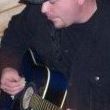
Warren Ross
view source
Warren K Ross
view source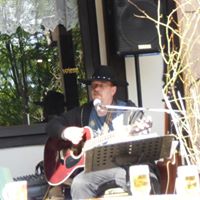
Warren Scott Ross
view source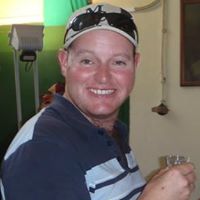
Warren Ross
view source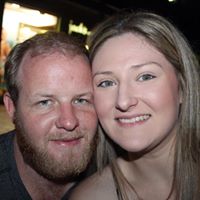
Warren Ross
view source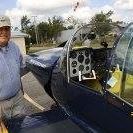
Warren R Ross
view source
Warren Ross
view source
Warren Ross Jr
view sourceFlickr
Myspace
Get Report for Warren Richard Ross from Montgomery, TX, age ~64










